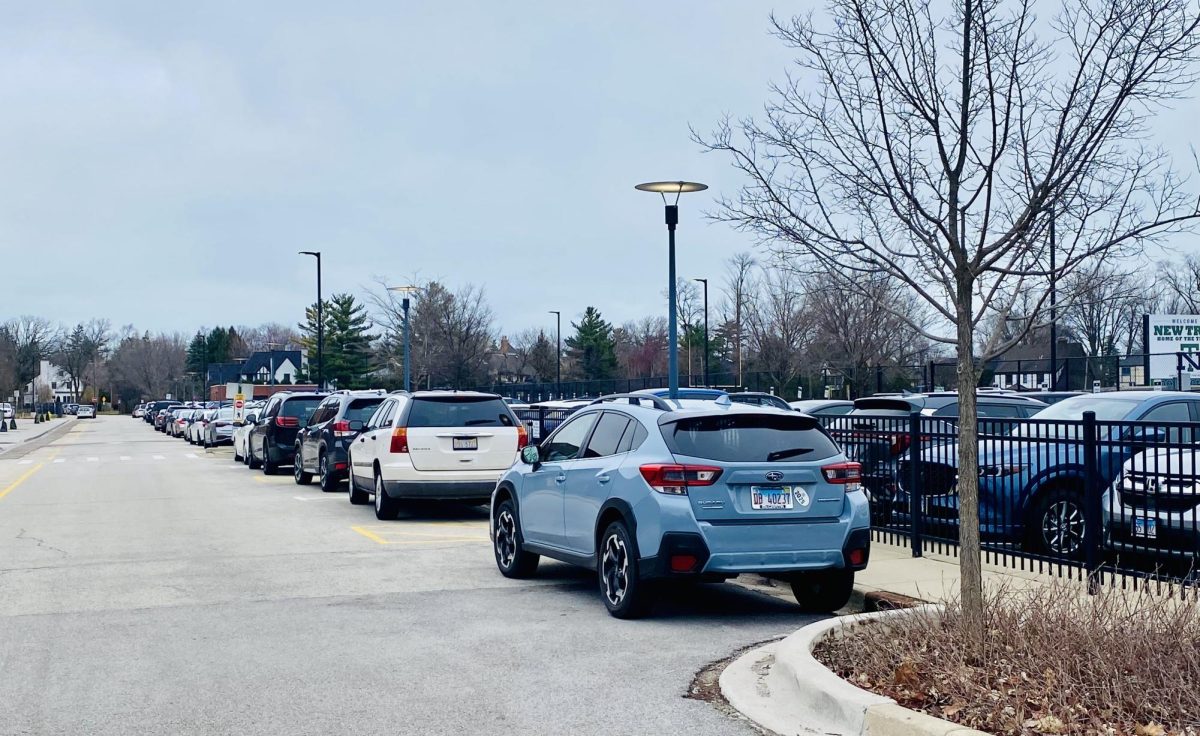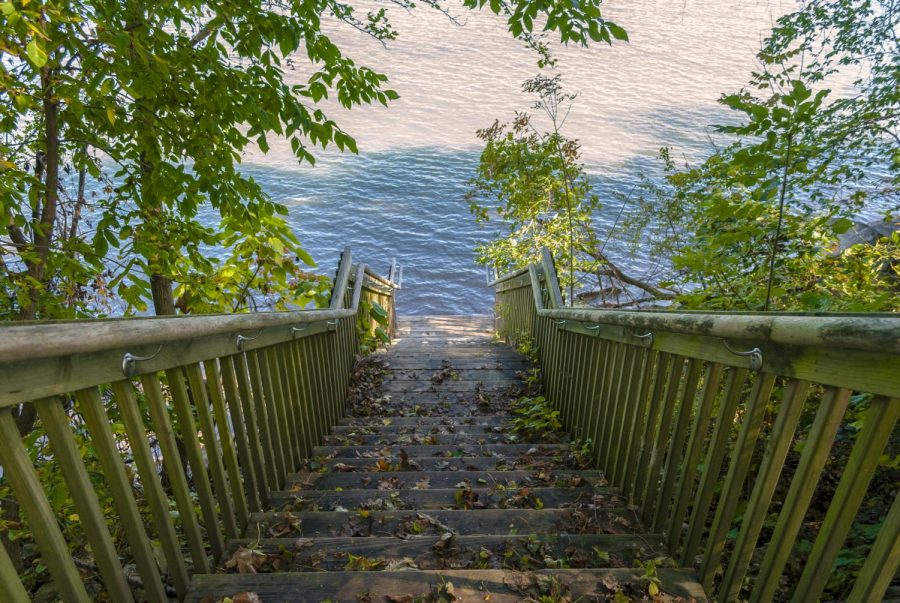Lake Michigan at highest water level since 1986
Climate change could be a factor, according to experts
Rising water levels have caused local beaches to shrink, such as Tower Beach in Winnetka
Just six years after reaching its lowest point ever recorded, Lake Michigan has risen to its highest water levels since 1986, and local residents are feeling the effects.
Lake Michigan is not the only lake facing high water levels. According to the Detroit Free Press all five Great Lakes are at least 15 inches above their long-term October averages, with Lake Michigan 35 inches above its average.
“Experts are attributing the water level rises to particularly wet springs in the Midwest over the past few years,” said environmental science teacher Cole Lanham.
Water levels fluctuate over time, but this dramatic rise could be partially attributed to climate change.
“Water levels in the Great Lakes have complex contributing factors, including seasonal rain, summer temperatures that drive evaporation, [and] water drawn from the system for human use. Climate change probably plays a role indirectly, but it is likely very hard to measure this,” added Lanham. “While climate change may contribute to changes in precipitation over the long run, the current peak water levels are more likely an aberration caused by a few especially rainy years in a row.”
Go Green Wilmette employee Maria Dabrowski agrees that while the high water levels are part of a cycle, they are accentuated by climate change as well.
“It’s important to remember that environmental changes are cyclical, but it’s unprecedented how fast the water levels are rising,” said Dabrowski. “It’s not really following the general pattern that meteorologists know. What’s happe ning is definitely still part of the cycle, but it’s happening at a much faster rate, which I think is due to climate change.”
Lakeside towns have had to contemplate possible courses of action if the lake were to rise to dangerous levels. Wilmette, aside from monitoring swim conditions, has not yet acted on the issue.
“We have not done anything yet. Are we going to in the future? That is a question for someone much bigger than me,” said Wilmette Park District official Holly Specht. “[Lake Michigan] has the highest rate of drowning of any of the Great Lakes. This year we had a lot more closures for high surf and rip currents, [to protect] the public.”
In response, Chicago city officials have installed barriers along the lakefront to prevent flooding in vulnerable locations, such as along Lake Shore Drive.
”We know that this threat isn’t new to our city,” Mayor Lori Lightfoot said in a statement. “In fact, high lake levels have been an ongoing issue that historically have caused serious damage to our lakefront infrastructure and beaches while also posing a continuous threat to pedestrian and traffic safety. We are constantly monitoring the lake’s water levels and creating solutions for potential flooding.”
Another consequence of elevated water levels is erosion, which could cause great damage if the lake continues to rise.
“[Erosion] impacts our dunes, which are natural barriers between the lake and a lot of property, especially since a lot of communities in the North Shore have houses right on the lake,” explained Dabrowski. “That’s going to increase property damage. Dunes also help protect against a lot of the destruction that waves and wind cause during storms.”
Dozens of area beaches have been shrinking as the lake rises, and some, such as Langdon Beach in Wilmette, have disappeared completely. Gillson Beach in Wilmette is one of the few beaches that hasn’t been severely affected, though it has still shrunk significantly.
“Gillson Beach is about half the size it was in 2013, so we are still open for business, unlike some of our neighbors that have very little beach,” said Specht. “We have a deep enough beach to be able to keep it open, unlike the Winnetka beaches, Glencoe beaches, Highland Park beaches… those communities have the same issues we’re having at Langdon, so that eventually the lake is flooded whereas [at] Gillson, we have a lot of parkland connected to it, so I don’t see Gillson closing.”
Senior Katie Merk, who was a lifeguard at Gillson Beach over the summer, was taken aback by the lake’s drastic rise.
“This year, it wasn’t even possible to walk from Gillson to Langdon without having to get wet or swim, which is something I had never seen before,” said Merk. “At the time they closed Langdon Beach [in May], there was enough beach left that my coworkers and I did not believe it to be the right time to close it. It did become unsafe as the summer progressed, though, and the high water levels [became] a safety hazard.”










































